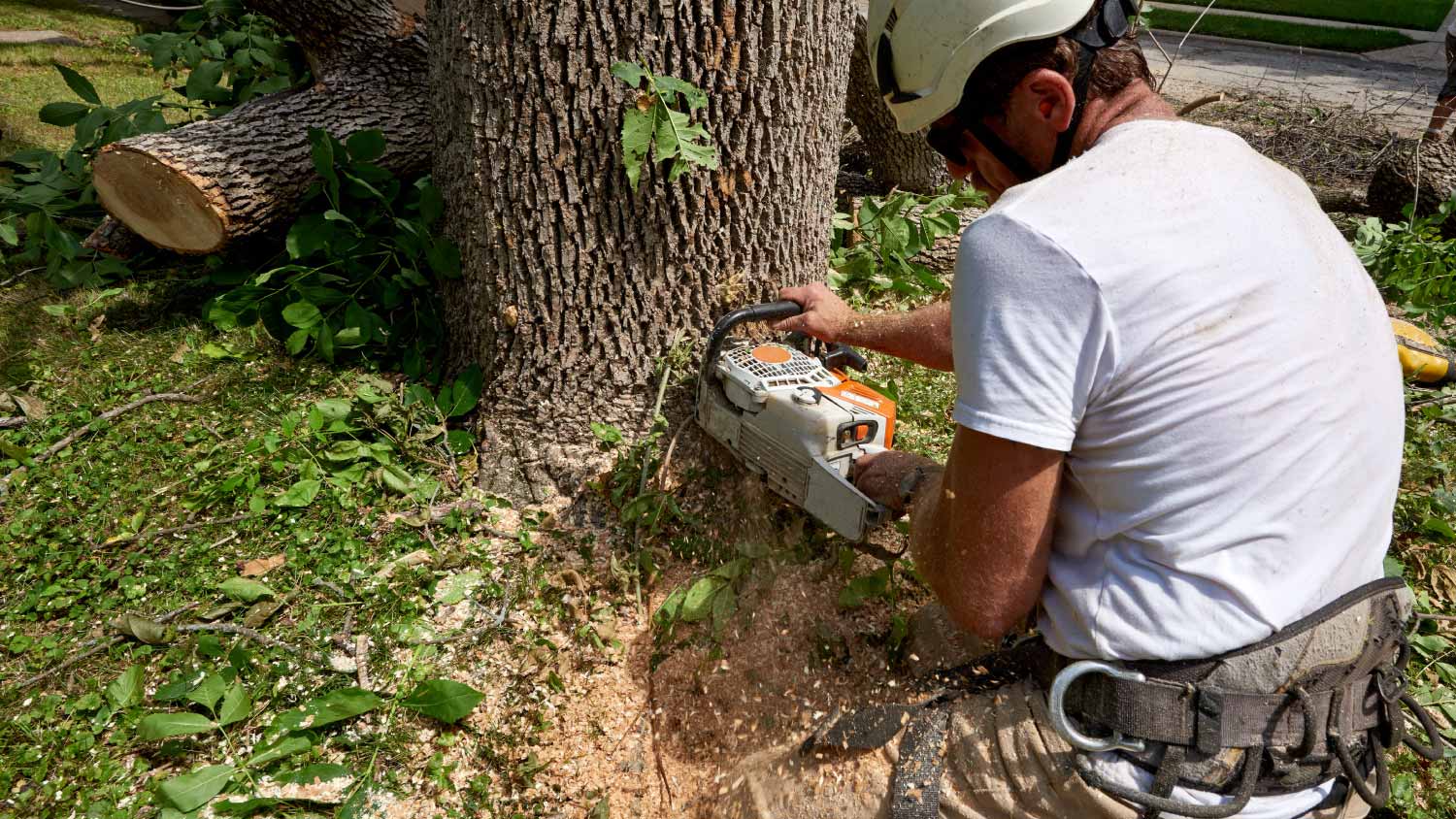How to Tell if a Tree Is Going to Fall: 5 Warning Signs to Look Out For
Look for these warning signs before your tree goes “Timber”


Dead branches indicate that your tree is dying and at risk of falling.
A tree leaning at 15 degrees or more should be addressed immediately.
Hollow spots in the trunk, exposed roots, and fungus near the roots are other signs your tree could fall.
If any of these warning signs are present, consult a tree maintenance professional ASAP.
The good news is that it’s fairly easy to learn how to tell if a tree is going to fall. A tree falling doesn’t usually happen overnight—unless severe winds and storms take it down. In most circumstances, a tree that will fall shows warning signs like dead branches, fungal growth, exposed roots, and other issues listed below. Our guide can help you understand the signs that can lead to a tree falling down, what to do if the signs are present, and who to call for help.
1. The Tree Has Dead Branches
Dead and falling branches are dangerous and indicate that your tree isn’t getting proper nutrients to nourish all of its limbs. This is especially true if the dead branches are high up in your tree. Dead branches are typically discolored from the rest of your tree’s branches and have fewer leaves and buds than the rest of your tree—often looking old, withered, and brownish-gray. Soon-to-fall trees usually show signs of root rot or dead branches.
2. There’s a Noticeable Lean

If your tree is no longer upright, it’s important to know how far a tree can lean before it falls. Any tree leaning at a 15-degree angle poses a safety risk and must be attended to as soon as possible. Unless the tree grew at an angle, you may need to call an arborist or tree removal specialist to determine if the tree is salvageable or if it needs to be taken out. The cost of tree removal can range between $200 and $2,000, depending on the size of the tree and the complexity of the job.
3. The Trunk Has Hollow Spots
Also called cavities, hollow spots in your tree are a sign of decay within the tree. This is often a result of improper pruning and can be prevented by regular tree maintenance. However, if the ship has sailed and the hollow spots are already present, you can consult a tree maintenance professional near you to see if the tree is salvageable or is already dying and at risk of falling.
4. The Tree’s Roots Are Exposed

You likely won’t see roots in healthy trees because the topsoil covers them to protect them from outside elements. Exposed roots are susceptible to damage from lawn equipment, severe weather, and other risks that can compromise the structure of the root and lead to decay. Decay can spread quickly and cause your tree to die off and fall over, which is why exposed roots are an issue that should be addressed ASAP. Start by removing any excess grass around the roots, then apply a layer or two of mulch over the roots to keep them protected.
5. Fungus Is Growing Near Roots
Unfortunately, fungus is a sign that your tree’s roots are already rotting and are at high risk of rotting, weakening, and falling over the next time a breeze hits. Because fungus spreads so quickly, you must contact a professional arborist or landscaper once you see any mushrooms on the roots or near the tree's base.
What to Do if Your Tree Is Showing Signs of Falling
Any signs that a tree might fall should be taken seriously since a falling tree can damage your property and pose safety risks to you and your family. Once you spot one or more signs listed above, the following process can help prevent any major mishaps:
Call an arborist or tree removal company near you to assess the risk and determine what next steps to take.
Steer clear of the tree and remove any items in its path in the chance that it falls before a professional gets to it.
Put flags or tape around the area to warn others of the risk of falling.
Take pictures of the tree to document any issues for insurance purposes.





- When To Cut Down A Tree: 13 Ways To Tell
- How to Save a Dying Tree: 8 Tips to Try
- What to Do With Tree Roots Above Ground: 15 Tips for Protruding Tree Roots
- Is My Tree Dead or Dormant?
- How to Tell If a Tree Is Dead (and What to Do About It)
- How to Straighten a Tree That’s Leaning in Your Yard
- How Long Can a Dead Tree Remain Standing?
- Transplanting Large Trees? Here's How to Do It Safely
- Can You Overwater a Tree? Recovering an Overwatered Tree
- How to Transplant a Tree: 9 Steps to Success










